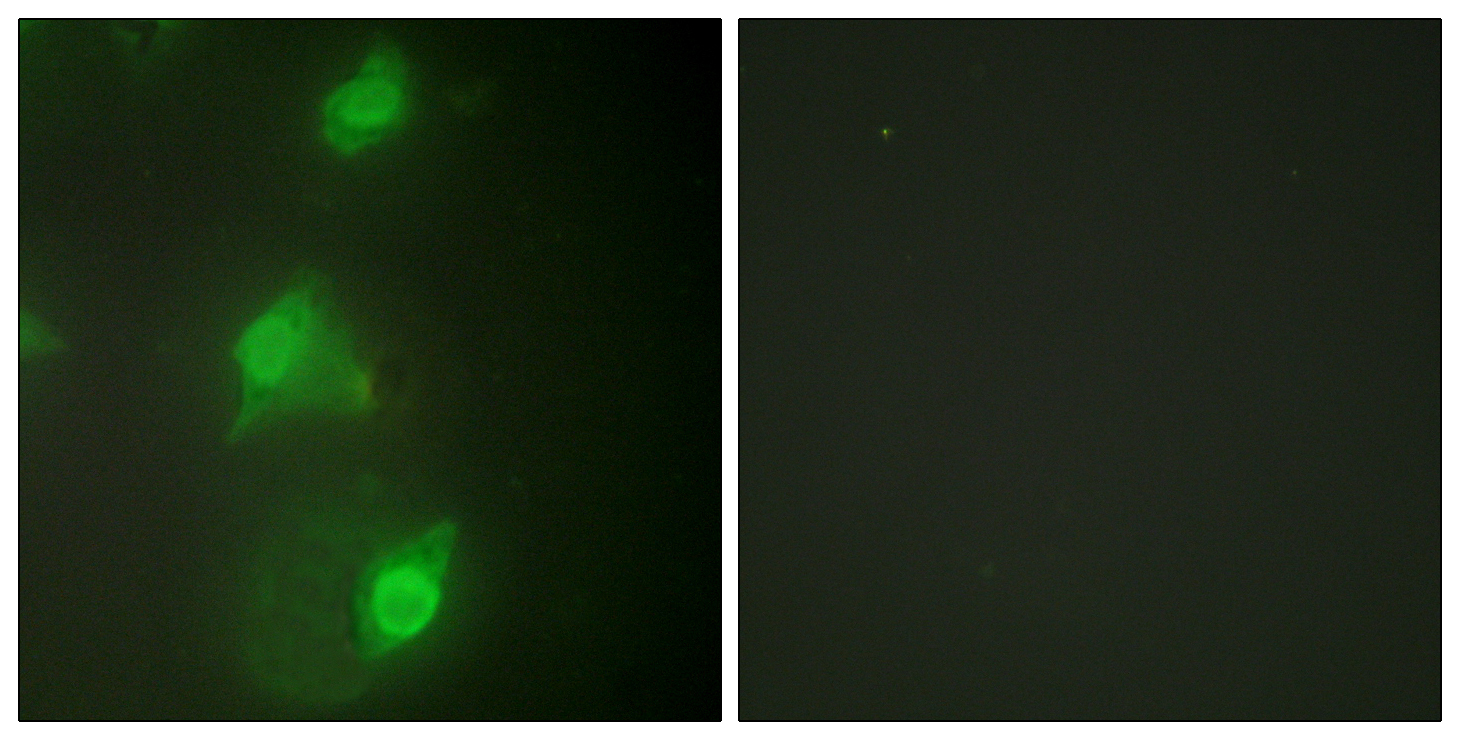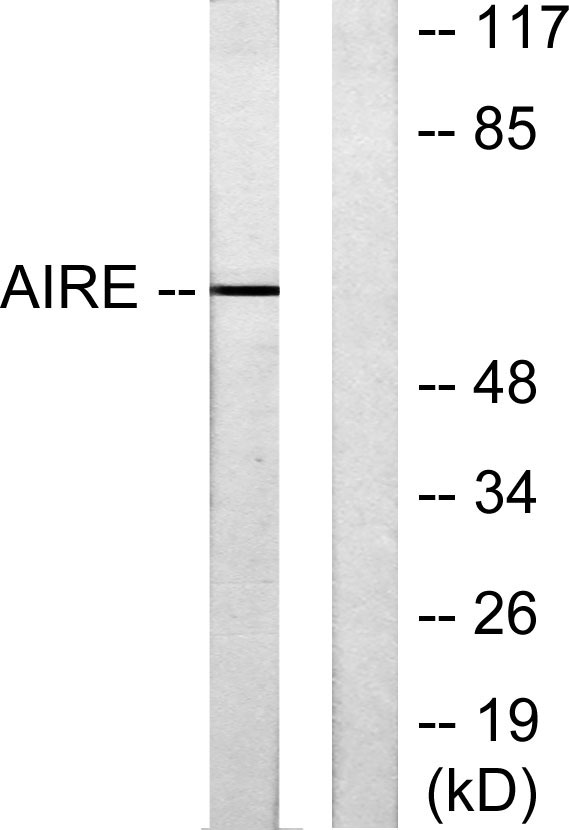AIRE-1 Polyclonal Antibody
- Catalog No.:YT0153
- Applications:WB;IF;ELISA
- Reactivity:Human;Mouse
- Target:
- AIRE-1
- Fields:
- >>Ubiquitin mediated proteolysis;>>Primary immunodeficiency
- Gene Name:
- AIRE
- Protein Name:
- Autoimmune regulator
- Human Gene Id:
- 326
- Human Swiss Prot No:
- O43918
- Mouse Gene Id:
- 11634
- Mouse Swiss Prot No:
- Q9Z0E3
- Immunogen:
- The antiserum was produced against synthesized peptide derived from human AIRE. AA range:91-140
- Specificity:
- AIRE-1 Polyclonal Antibody detects endogenous levels of AIRE-1 protein.
- Formulation:
- Liquid in PBS containing 50% glycerol, 0.5% BSA and 0.02% sodium azide.
- Source:
- Polyclonal, Rabbit,IgG
- Dilution:
- WB 1:500 - 1:2000. IF 1:200 - 1:1000. ELISA: 1:10000. Not yet tested in other applications.
- Purification:
- The antibody was affinity-purified from rabbit antiserum by affinity-chromatography using epitope-specific immunogen.
- Concentration:
- 1 mg/ml
- Storage Stability:
- -15°C to -25°C/1 year(Do not lower than -25°C)
- Other Name:
- AIRE;APECED;Autoimmune regulator;Autoimmune polyendocrinopathy candidiasis ectodermal dystrophy protein;APECED protein
- Observed Band(KD):
- 60kD
- Background:
- This gene encodes a transcriptional regulator that forms nuclear bodies and interacts with the transcriptional coactivator CREB binding protein. The encoded protein plays an important role in immunity by regulating the expression of autoantigens and negative selection of autoreactive T-cells in the thymus. Mutations in this gene cause the rare autosomal-recessive systemic autoimmune disease termed autoimmune polyendocrinopathy with candidiasis and ectodermal dystrophy (APECED). [provided by RefSeq, Jun 2012],
- Function:
- alternative products:Additional isoforms seem to exist. Experimental confirmation may be lacking for some isoforms,disease:Defects in AIRE are a cause of autoimmune poly-endocrinopathy candidiasis ectodermal dystrophy (APECED) [MIM:240300]; also known as autoimmune polyglandular syndrome type I (APS-1). APECED is an autosomal recessive disease characterized by: (1) autoimmune polyendocrinopathies: hypoparathyroidism, adrenocortical failure, IDDM, gonadal failure, hypothyroidism, pernicious anemia, and hepatitis; (2) chronic mucocutaneous candidiasis; (3) ectodermal dystrophies: vitiligo, alopecia, keratopathy, dystrophy of dental enamel, nails and tympanic membranes. In addition, a high proportion of patients develop squamous cell carcinoma of the oral mucosa. The disease is reported worldwide but is exceptionally prevalent among the Finnish population (incidence 1:25000) and the Iranian
- Subcellular Location:
- Nucleus . Cytoplasm . Predominantly nuclear but also cytoplasmic (PubMed:11274163, PubMed:14974083). Found in nuclear body-like structures (dots) and in a filamentous vimentin-like pattern (PubMed:11274163, PubMed:14974083, PubMed:26084028). Associated with tubular structures (PubMed:11274163, PubMed:14974083). .
- Expression:
- Widely expressed. Expressed at higher level in thymus (medullary epithelial cells and monocyte-dendritic cells), pancreas, adrenal cortex and testis. Expressed at lower level in the spleen, fetal liver and lymph nodes. In secondary lymphoid organs, expressed in a discrete population of bone marrow-derived toleregenic antigen presenting cells (APCs) called extrathymic AIRE expressing cells (eTAC)(at protein level) (PubMed:23993652). Isoform 2 and isoform 3 seem to be less frequently expressed than isoform 1, if at all.
- June 19-2018
- WESTERN IMMUNOBLOTTING PROTOCOL
- June 19-2018
- IMMUNOHISTOCHEMISTRY-PARAFFIN PROTOCOL
- June 19-2018
- IMMUNOFLUORESCENCE PROTOCOL
- September 08-2020
- FLOW-CYTOMEYRT-PROTOCOL
- May 20-2022
- Cell-Based ELISA│解您多样本WB检测之困扰
- July 13-2018
- CELL-BASED-ELISA-PROTOCOL-FOR-ACETYL-PROTEIN
- July 13-2018
- CELL-BASED-ELISA-PROTOCOL-FOR-PHOSPHO-PROTEIN
- July 13-2018
- Antibody-FAQs
- Products Images

- Western Blot analysis of various cells using AIRE-1 Polyclonal Antibody diluted at 1:1000

- Immunofluorescence analysis of HeLa cells, using AIRE Antibody. The picture on the right is blocked with the synthesized peptide.

- Western blot analysis of lysates from 293 cells, using AIRE Antibody. The lane on the right is blocked with the synthesized peptide.



